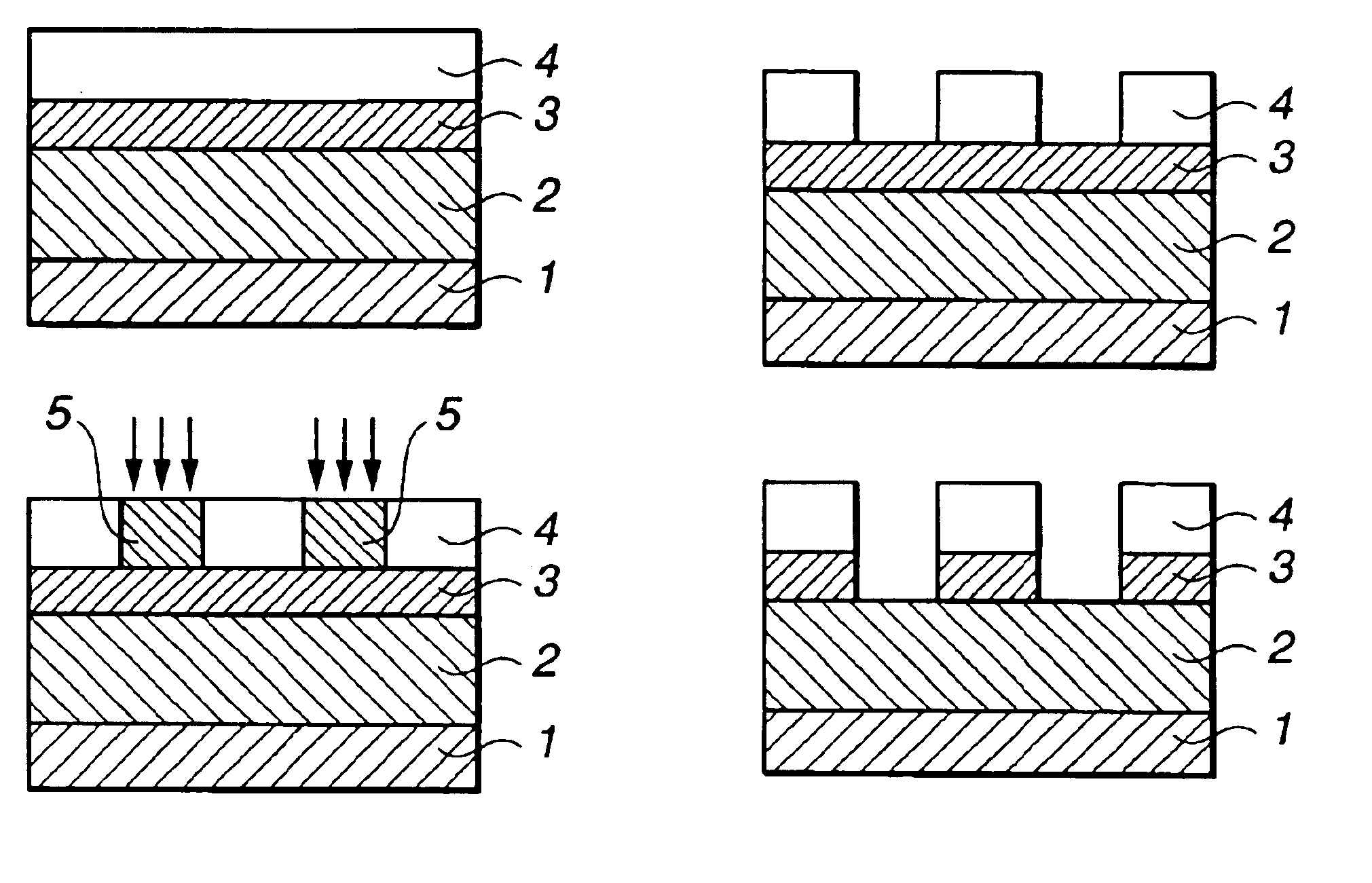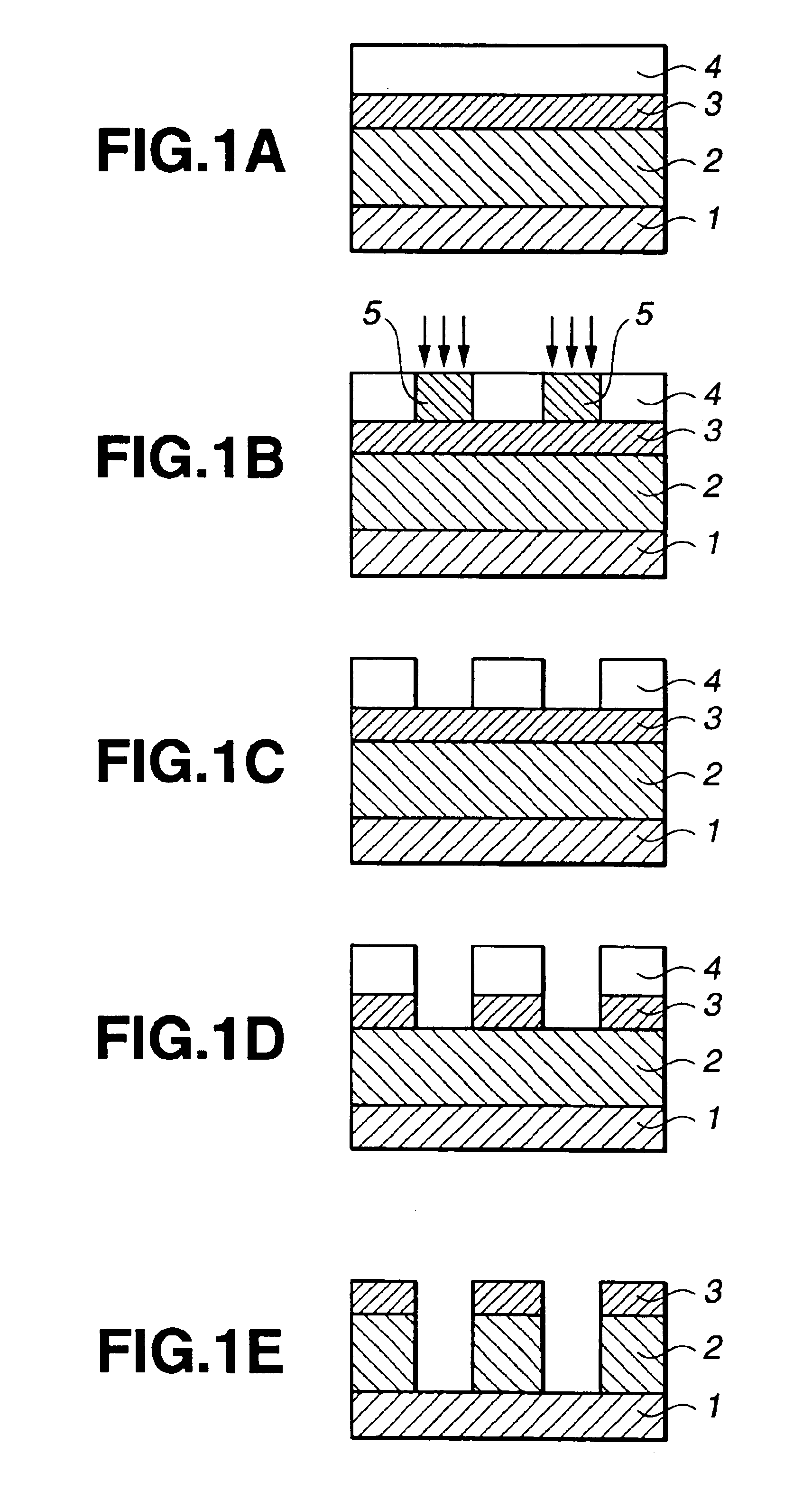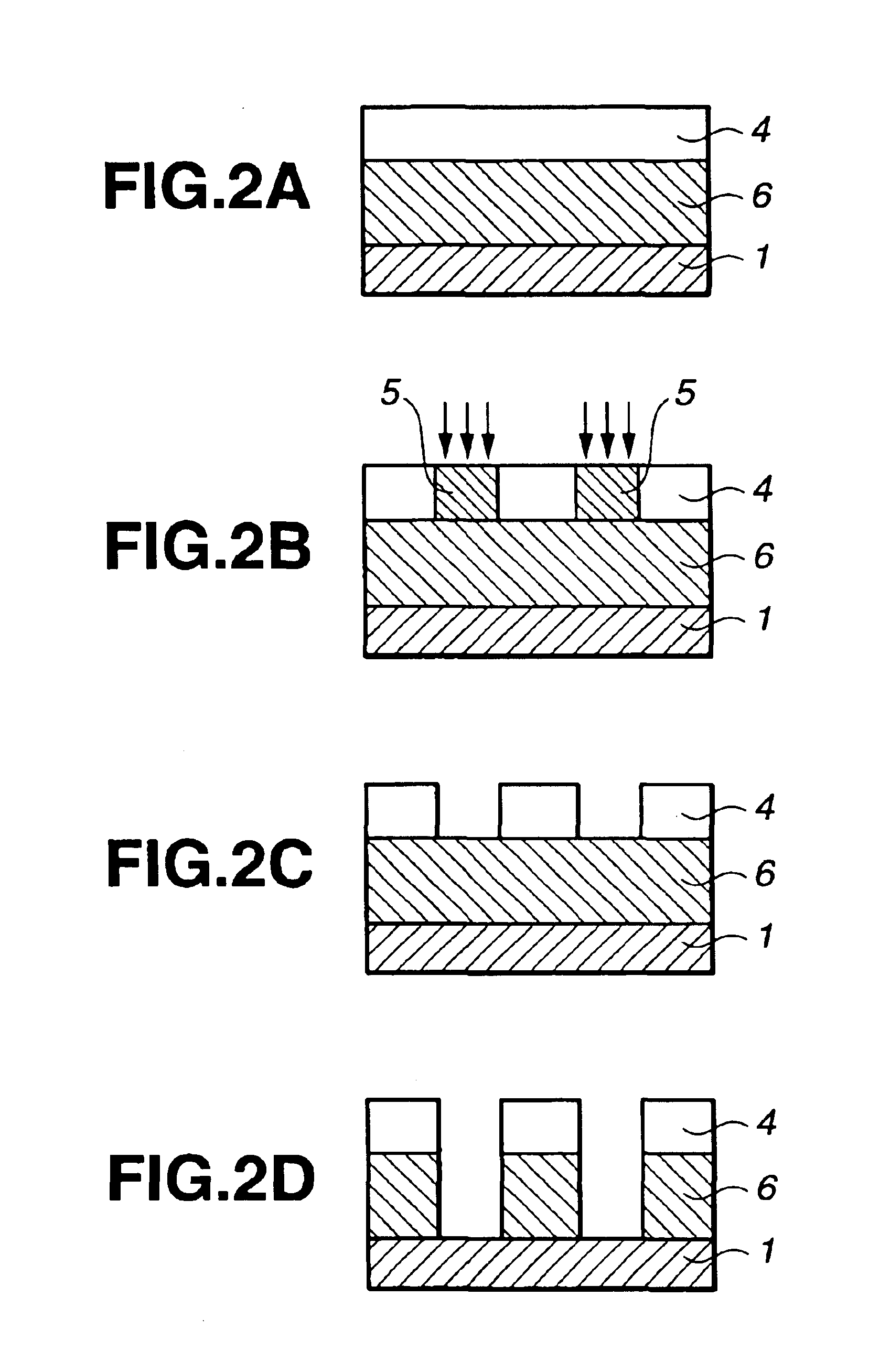Silicon-containing polymer, resist composition and patterning process
a technology of composition and patterning process, which is applied in the direction of photosensitive materials, instruments, non-metal conductors, etc., can solve the problems of inability to use resists as the base resin, the transmittance of these polymers cannot reach the transmittance of polyhydroxystyrene, and the difficulty of insuring transparency, etc., to achieve high sensitivity, improve heat resistance, and high resolution
- Summary
- Abstract
- Description
- Claims
- Application Information
AI Technical Summary
Benefits of technology
Problems solved by technology
Method used
Image
Examples
synthesis example 1
[0133]In a 100-ml flask were admitted 9.8 g of maleic anhydride, 10.6 g of monomer b1, 10.7 g of monomer a1, 18.2 g of monomer c1, and 30 g of THF as a solvent. The reactor was cooled to −70° C. in a nitrogen atmosphere, after which deaeration in vacuum and nitrogen flow were repeated three times. After warming to room temperature, 1 g of 2,2′-azobis(2,4-dimethylvaleronitrile) as a polymerization initiator was added. The reactor was heated to 55° C., at which reaction was conducted for 25 hours. The reaction solution was diluted with 70 ml of acetone and poured into 1 liter of isopropyl alcohol for precipitation. The white solid precipitate was collected by filtration and dried in vacuum at 40° C., yielding 31 g of a white polymer.
[0134]The polymer was analyzed by 13C- and 1H-NMR and GPC, with the results shown below.
[0135]Copolymer Compositional Ratio
[0136]maleic anhydride:monomer b1:monomer a1:monomer c1=20.3:12.2:26.5:41.0
[0137]Mw=8,800
[0138]Molecular weight dispersity (Mw / Mn)=1....
synthesis example 2
[0140]In a 100-ml flask were admitted 13.2 g of monomer b2, 10.7 g of monomer a1, 18.2 g of monomer c1, and 30 g of THF as a solvent. The reactor was cooled to −70° C. in a nitrogen atmosphere, after which deaeration in vacuum and nitrogen flow were repeated three times. After warming to room temperature, 1 g of 2,2′-azobis(2,4-dimethylvaleronitrile) as a polymerization initiator was added. The reactor was heated to 55° C., at which reaction was conducted for 25 hours. The reaction solution was diluted with 70 ml of acetone and poured into 1 liter of isopropyl alcohol for precipitation. The white solid precipitate was collected by filtration and dried in vacuum at 40° C., yielding 25.5 g of a white polymer.
[0141]The polymer was analyzed by 13C- and 1H-NMR and GPC, with the results shown below.
[0142]Copolymer Compositional Ratio
[0143]monomer b2:monomer a1:monomer c1=35.8:25.5:38.7
[0144]Mw=9,900
[0145]Dispersity (Mw / Mn)=1.72
[0146]This is designated Polymer 2.
synthesis example 3
[0147]In a 100-ml flask were admitted 14.2 g of monomer b3, 10.7 g of monomer a1, 18.2 g of monomer c1, and 30 g of THF as a solvent. The reactor was cooled to −70° C. in a nitrogen atmosphere, after which deaeration in vacuum and nitrogen flow were repeated three times. After warming to room temperature, 1 g of 2,2′-azobis(2,4-dimethylvaleronitrile) as a polymerization initiator was added. The reactor was heated to 55° C., at which reaction was conducted for 25 hours. The reaction solution was diluted with 70 ml of acetone and poured into 1 liter of isopropyl alcohol for precipitation. The white solid precipitate was collected by filtration and dried in vacuum at 40° C., yielding 22.2 g of a white polymer.
[0148]The polymer was analyzed by 13C- and 1H-NMR and GPC, with the results shown below.
[0149]Copolymer Compositional Ratio
[0150]monomer b3:monomer a1:monomer c1=42.8:22.5:34.7
[0151]Mw=10,200
[0152]Dispersity (Mw / Mn)=1.83
[0153]This is designated Polymer 3.
PUM
| Property | Measurement | Unit |
|---|---|---|
| wavelength | aaaaa | aaaaa |
| wavelength | aaaaa | aaaaa |
| wavelength | aaaaa | aaaaa |
Abstract
Description
Claims
Application Information
 Login to View More
Login to View More - R&D
- Intellectual Property
- Life Sciences
- Materials
- Tech Scout
- Unparalleled Data Quality
- Higher Quality Content
- 60% Fewer Hallucinations
Browse by: Latest US Patents, China's latest patents, Technical Efficacy Thesaurus, Application Domain, Technology Topic, Popular Technical Reports.
© 2025 PatSnap. All rights reserved.Legal|Privacy policy|Modern Slavery Act Transparency Statement|Sitemap|About US| Contact US: help@patsnap.com



